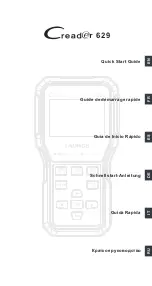
80
Electrical Systems
For accuracy, test the auxiliary battery voltage using a volt-
ohm meter. A fully charged auxiliary battery will read 12.7
volts DC and 1.265 specific gravity at 80°F (32°C). The auxil-
iary battery is considered discharged at 11.8 volts, and dead
at 11.65 volts. When voltage drops below those levels, perma-
nent damage may occur. Typically, a deep cycle battery has
an amp-hour rating of 75-100 amps.
If the furnace and refrigerator are operating simultaneously,
approximately (12.0 + 3.0) 15.0 amps per hour are used. This
does not include any 12-volt lights, water pump or any other
12-volt component.
If the furnace and refrigerator in the above example operated
constantly, a 75 amp-hour battery would become fully dis-
charged in 5 hours (75ah /15a = 5h).
The auxiliary battery should be installed in parallel with the
battery in your tow vehicle. When the 7-way trailer plug is
connected, both batteries power the RV so it is important not
to discharge your tow vehicle battery below the level required
to start the engine. To prevent this from occurring, disconnect
the 7-way trailer plug or install a battery isolator. When the
tow vehicle engine is operating with the RV connected, the
tow vehicle charging system will charge both batteries.
Replacement and maintenance
Some equipment in your RV will draw small amounts of cur-
rent even when turned OFF. To prevent the auxiliary battery
from being discharged when your RV is not connected to
shore line power, disconnect the auxiliary battery negative ca-
ble at the battery. During storage, it is important to check the
voltage monthly and recharge the auxiliary battery as needed.
If you remove the auxiliary battery from your RV, store it in a
dry, cool area per the manufacturer’s instructions.
When it is time to replace the auxiliary battery, replace it with
a Group 24 or Group 27 deep cycle battery only. Contact the
battery manufacturer for further information. Do not reverse
the positive and negative battery cables (doing so will blow
the reverse polarity fuse(s) that protect the converter).
12-VOLT FUSE PANEL
The 12-volt fuse panel is labeled to indicate fuse sizes, po-
sitions and the components powered. At the beginning of
camping season, inspect all the 12-volt fuses and replace as
needed.
Summary of Contents for Imagine
Page 1: ...OWNER S MANUAL IMAGINE TRAVEL TRAILER ...
Page 2: ......
Page 4: ...This page is intentionally blank ...
Page 6: ...This page is intentionally blank ...
Page 10: ...8 Introduction Safety Alert Symbols Cont ...
Page 17: ...15 This page is intentionally blank ...
Page 18: ...16 This page is intentionally blank ...
Page 66: ...64 This page is intentionally blank ...
Page 102: ...100 This page is intentionally blank ...
Page 110: ...108 This page is intentionally blank ...
Page 120: ...118 This page is intentionally blank ...
Page 142: ...140 This page is intentionally blank ...
Page 166: ...164 Customer Notes ...
Page 167: ...165 Customer Notes ...
Page 168: ...166 Customer Notes ...
Page 169: ...167 Customer Notes ...
Page 170: ...168 Customer Notes ...
Page 171: ...169 Customer Notes ...
Page 172: ...170 Customer Notes ...
Page 173: ...171 Customer Notes ...
Page 174: ...172 Customer Notes ...
Page 175: ...173 Customer Notes ...
Page 176: ...174 Customer Notes ...
Page 177: ...175 Customer Notes ...
Page 178: ...176 Customer Notes ...
Page 179: ......
















































